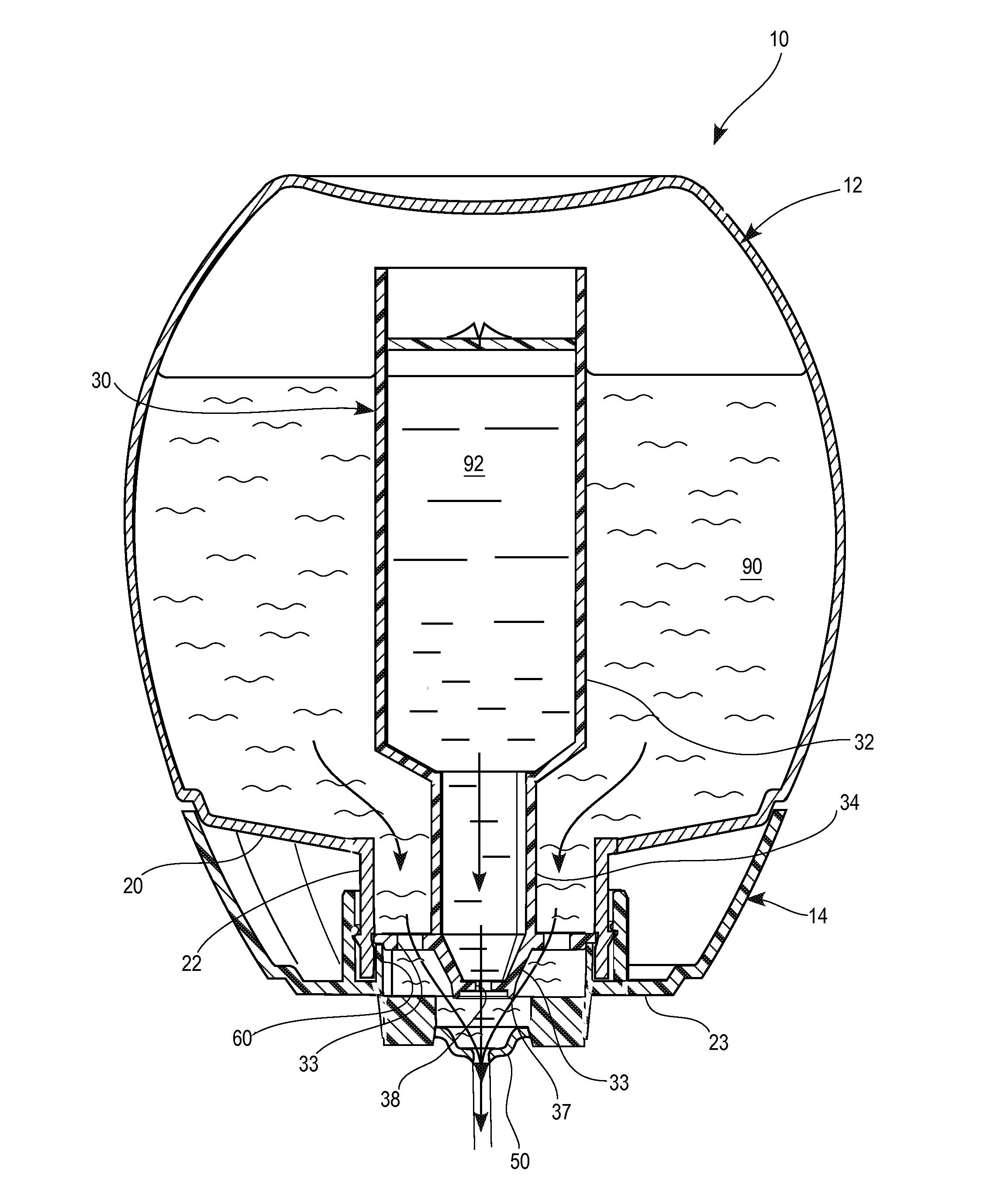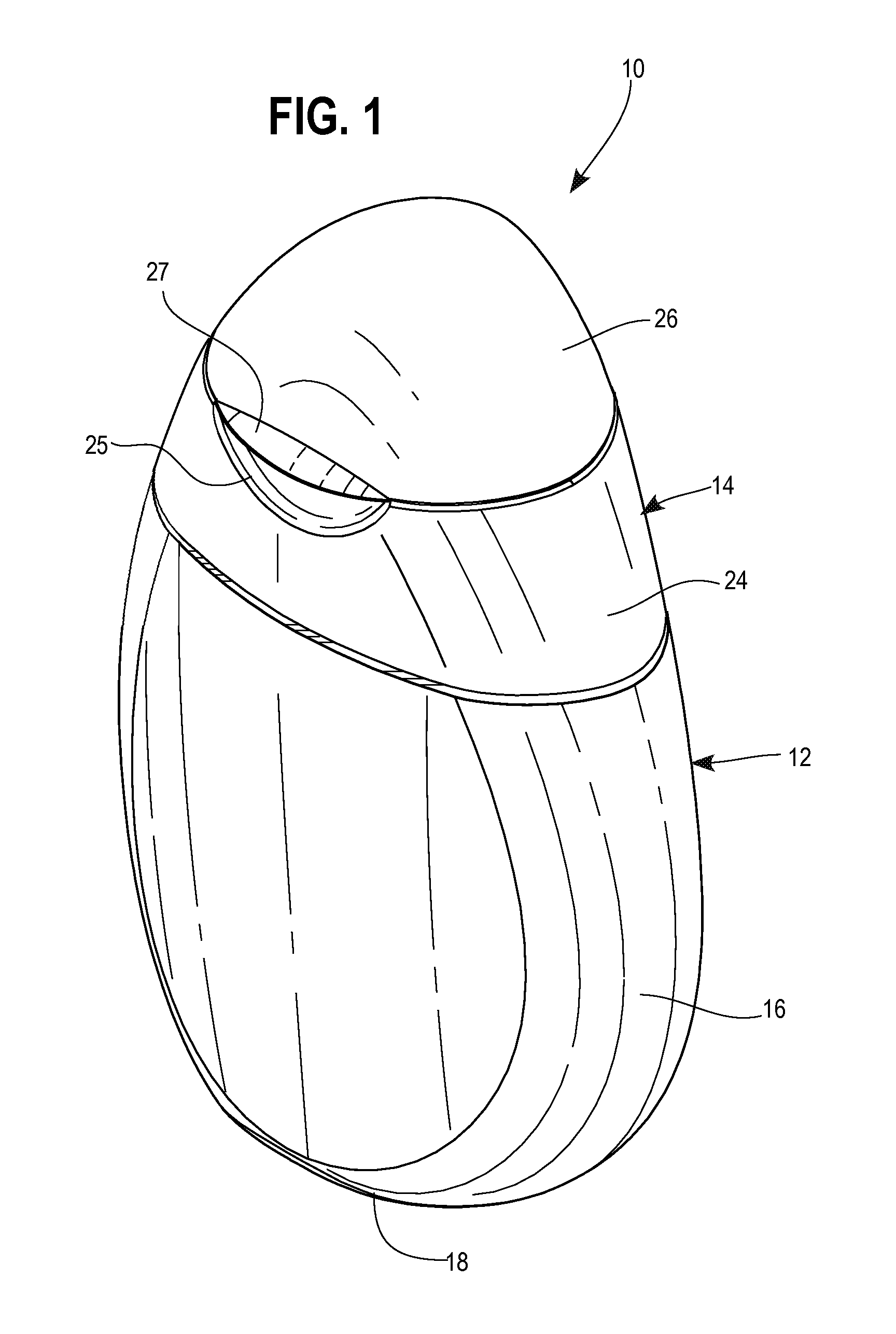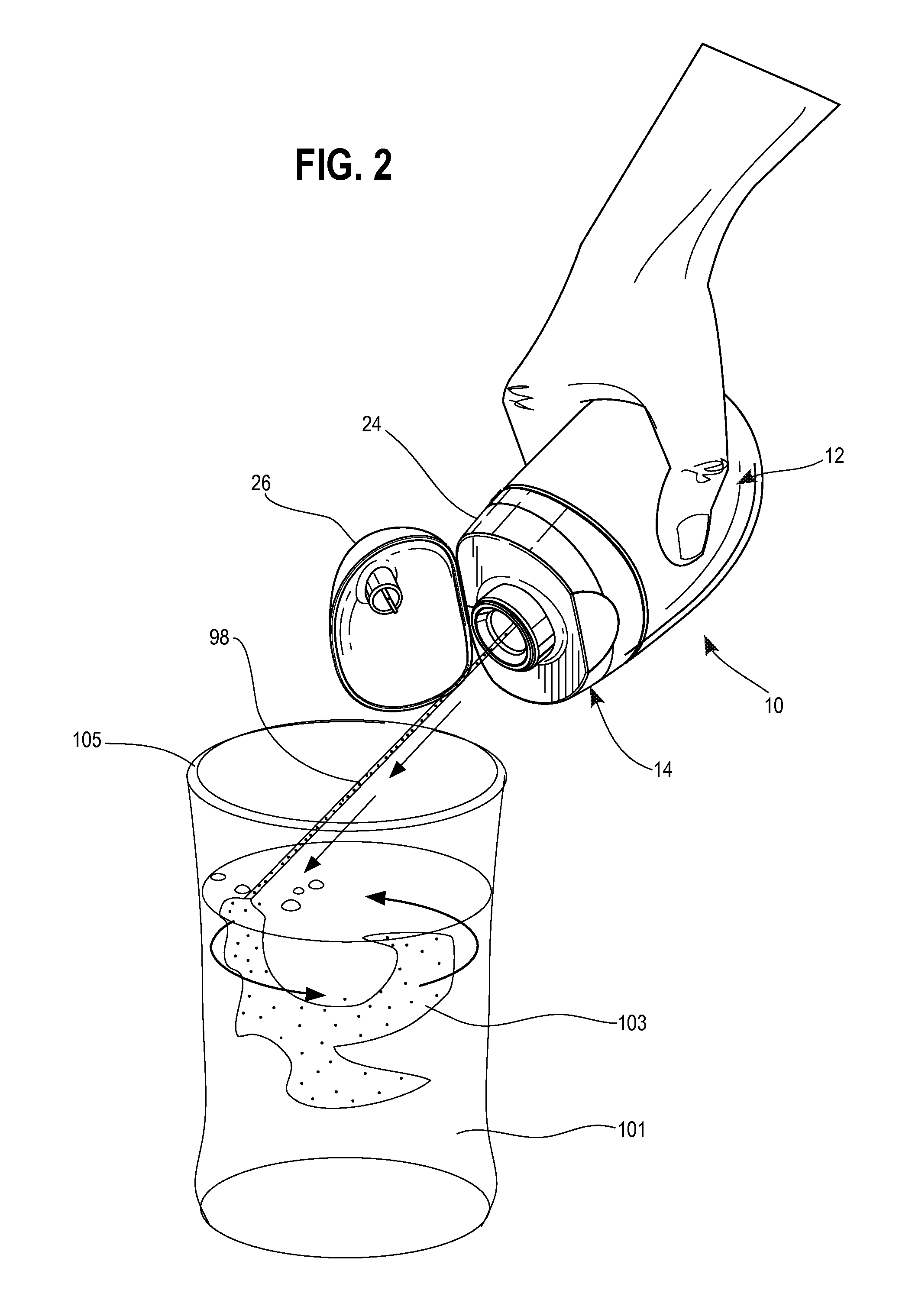Containers and methods for isolating liquids prior to dispensing
- Summary
- Abstract
- Description
- Claims
- Application Information
AI Technical Summary
Benefits of technology
Problems solved by technology
Method used
Image
Examples
example 2
[0083]In another example, a container can be configured for dispensing twelve doses of 5 cc combined of the first and second beverage components 90 and 92 in a 3:2 ratio. The container can be configured for the 3:2 dispense ratio at least in part by having a 3:2 ratio in the number of same sized flow ports 177 and exit orifices 178 of the upper insert 170, for example, as discussed above. The initial liquid volume (i.e., Dispense Cycle 0) of the first and second beverage components 30 and 92 can each be 38 and 24 cc, respectively. Each dispense cycle can result in 3 cc of the first beverage component 90 and 2 cc of the second beverage component 92 being dispensed, thereby decreasing the body 12 liquid volume by 3 cc and the bag 89 liquid volume by 2 cc. The total bag volume or size can be 54 cc. The dispensing segment of the dispense cycle is followed by the aspiration segment, whereby an equivalent or substantially close thereto to the total liquid volume dispensed of air is introd...
PUM
| Property | Measurement | Unit |
|---|---|---|
| Flow rate | aaaaa | aaaaa |
| Volume | aaaaa | aaaaa |
| Flexibility | aaaaa | aaaaa |
Abstract
Description
Claims
Application Information
 Login to View More
Login to View More - R&D
- Intellectual Property
- Life Sciences
- Materials
- Tech Scout
- Unparalleled Data Quality
- Higher Quality Content
- 60% Fewer Hallucinations
Browse by: Latest US Patents, China's latest patents, Technical Efficacy Thesaurus, Application Domain, Technology Topic, Popular Technical Reports.
© 2025 PatSnap. All rights reserved.Legal|Privacy policy|Modern Slavery Act Transparency Statement|Sitemap|About US| Contact US: help@patsnap.com



